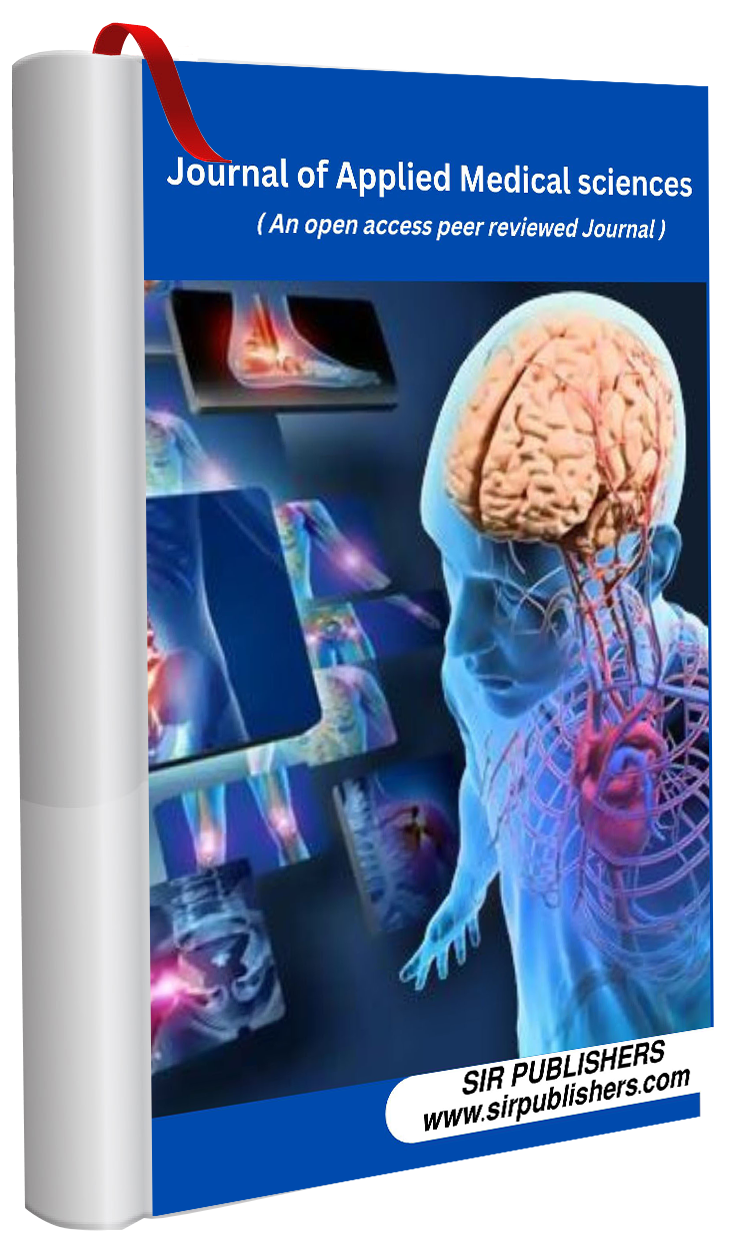ALZHEIMER’S DISEASE AND ITS THERAPY BY WITHANIA SOMNIFERA PHYTOCHEMICALS
Keywords:
Alzheimer’s disease, Withania somnifera, PhytoconstituentsAbstract
Alzheimer’s Disease (AD) is a progressive neurodegenerative disorder, which is the most common form of dementia found in the older population. The etiological hallmarks of AD are an extracellular agglomeration of Aβ protein (Aβ plaques) and intracellular accumulation of tau protein (Neurofibrillary tangle). Aβ plaques and neurofibrillary tangles are colocalized/joined together with astrocytes and microglia, releasing neuroinflammatory mediators in the brain of an AD patient. The available drugs (AchE inhibitors, NMDA receptor antagonists, and monoclonal antibodies) are associated with various adverse drug reactions including GI problems, anorexia, tremor, and found to be ineffective in a section of AD patients, demanding an alternative better therapy for AD. Interestingly, Withania somnifera (W. somnifera), a natural plant has been found to play a crucial role in the management of various diseases including AD, owing to the various medicinal properties of its phytoconstituents such as anti- inflammatory, and antioxidant. Numerous studies have been conducted in the context of the potential role of W. somnifera in AD therapy. This chapter discusses the role of cellular mediators (astrocytes, microglia, and oligodendrocytes) and chemical mediators (cytokine, chemokine, and cyclooxygenase) involved in the AD pathogenesis. Further, the significant contribution of various in-silico, in-vitro, and in-vivo studies pertaining to the potential role of various phytoconstituents of W. somnifera in AD therapy has been discussed.
References
A. john C. Kumar Vinay, Abbas Abul k, ROBBINS & COTRAN PATHOLOGIC BASIS OF DISEASE, 10th editi. USA: Elsevier Health Sciences, 2020.
World health organization, “No Title.” [Online]. Available: https://www.who.int/news- room/fact-sheets/detail/dementia.
“2020 Alzheimer’s disease facts and figures.,” Alzheimers. Dement., Mar. 2020, doi: 10.1002/alz.12068.
K. B. C. Brunton Laurence L., Hilal-Dandan Randa, “Goodman and Gillman’s THE PHARMACOLOGICAL BASIS OF THERAPEUTICS,” in Goodman and Gillman’s THE PHARMACOLOGICAL BASIS OF THERAPEUTICS, THIRTEENTH EDITION, Laurence L. Brunton, Randa Hilal-Dandan, Björn C. Knollmann, 2018 by McGraw- Hill Education, 13th editi., H.-D. Randa, Ed. California USA: McGraw-Hill Education, 2017, p. 1423.
R. Strohmeyer and J. Rogers, “Molecular and cellular mediators of Alzheimer’s disease inflammation,” J. Alzheimer’s Dis., vol. 3, no. 1, pp. 131–157, 2001.
M. Fakhoury, “Microglia and astrocytes in Alzheimer’s disease: implications for therapy,” Curr. Neuropharmacol., vol. 16, no. 5, pp. 508–518, 2018.
K. R. V. Kurapati, T. Samikkannu, V. S. R. Atluri, E. Kaftanovskaya, A. Yndart, and
M. P. N. Nair, “β-Amyloid1-42, HIV-1Ba-L (clade B) infection and drugs of abuse induced degeneration in human neuronal cells and protective effects of ashwagandha (Withania somnifera) and its constituent Withanolide A.,” PLoS One, vol. 9, no. 11, p. e112818, 2014, doi: 10.1371/journal.pone.0112818.
S. B. N. and S. Avinash, Textbook of Pharmacognosy and Phytochemistry, Elsvier Fi. India: Elsevier, a division of Reed Elsevier India Private Limited, 2010.
N. Sehgal et al., “Withania somnifera reverses Alzheimer’s disease pathology by enhancing low-density lipoprotein receptor-related protein in liver.,” Proc. Natl. Acad. Sci. U. S. A., vol. 109, no. 9, pp. 3510–3515, Feb. 2012, doi: 10.1073/pnas.1112209109.
M. T. Heneka et al., “Neuroinflammation in Alzheimer’s disease.,” Lancet. Neurol., vol. 14, no. 4, pp. 388–405, Apr. 2015, doi: 10.1016/S1474-4422(15)70016-5.
C. Domingues, O. A. B. da Cruz E Silva, and A. G. Henriques, “Impact of Cytokines and Chemokines on Alzheimer’s Disease Neuropathological Hallmarks.,” Curr. Alzheimer Res., vol. 14, no. 8, pp. 870–882, 2017, doi: 10.2174/1567205014666170317113606.
J. J. M. Hoozemans, J. M. Rozemuller, E. S. van Haastert, R. Veerhuis, and P. Eikelenboom, “Cyclooxygenase-1 and -2 in the different stages of Alzheimer’s disease pathology.,” Curr. Pharm. Des., vol. 14, no. 14, pp. 1419–1427, 2008, doi: 10.2174/138161208784480171.
N. J. Dar, A. Hamid, and M. Ahmad, “Pharmacologic overview of Withania somnifera, the Indian Ginseng.,” Cell. Mol. Life Sci., vol. 72, no. 23, pp. 4445–4460, Dec. 2015, doi: 10.1007/s00018-015-2012-1.
S.-H. Yang, “Cellular and molecular mediators of neuroinflammation in Alzheimer disease,” Int. Neurourol. J., vol. 23, no. Suppl 2, p. S54, 2019.
M. I. Choudhary et al., “Withanolides, a new class of natural cholinesterase inhibitors with calcium antagonistic properties.,” Biochem. Biophys. Res. Commun., vol. 334, no. 1, pp. 276–287, Aug. 2005, doi: 10.1016/j.bbrc.2005.06.086.
A. Grover, A. Shandilya, V. Agrawal, V. S. Bisaria, and D. Sundar, “Computational evidence to inhibition of human acetyl cholinesterase by withanolide a for Alzheimer treatment.,” J. Biomol. Struct. Dyn., vol. 29, no. 4, pp. 651–662, 2012, doi: 10.1080/07391102.2012.10507408.
I. Ahmad, D. Kumar, and H. Patel, “Computational investigation of phytochemicals from Withania somnifera (Indian ginseng/ashwagandha) as plausible inhibitors of GluN2B-containing NMDA receptors.,” J. Biomol. Struct. Dyn., pp. 1–13, May 2021, doi: 10.1080/07391102.2021.1905553.
S. Dubey, M. Kallubai, and R. Subramanyam, “Improving the inhibition of β-amyloid aggregation by withanolide and withanoside derivatives.,” Int. J. Biol. Macromol., vol. 173, pp. 56–65, Mar. 2021, doi: 10.1016/j.ijbiomac.2021.01.094.
M. Singh and C. Ramassamy, “In vitro screening of neuroprotective activity of Indian medicinal plant Withania somnifera.,” J. Nutr. Sci., vol. 6, p. e54, 2017, doi: 10.1017/jns.2017.48.
V. S. R. Atluri et al., “Inhibition of Amyloid-Beta Production, Associated Neuroinflammation, and Histone Deacetylase 2-Mediated Epigenetic Modifications Prevent Neuropathology in Alzheimer’s Disease in vitro Model.,” Front. Aging Neurosci., vol. 11, p. 342, 2019, doi: 10.3389/fnagi.2019.00342.
B. Jayaprakasam, K. Padmanabhan, and M. G. Nair, “Withanamides in Withania somnifera fruit protect PC-12 cells from beta-amyloid responsible for Alzheimer’s disease.,” Phytother. Res., vol. 24, no. 6, pp. 859–863, Jun. 2010, doi: 10.1002/ptr.3033.
A. Pandey, S. Bani, P. Dutt, N. Kumar Satti, K. Avtar Suri, and G. Nabi Qazi, “Multifunctional neuroprotective effect of Withanone, a compound from Withania somnifera roots in alleviating cognitive dysfunction.,” Cytokine, vol. 102, pp. 211– 221, Feb. 2018, doi: 10.1016/j.cyto.2017.10.019.
A. Konar et al., “M1 muscarinic receptor is a key target of neuroprotection, neuroregeneration and memory recovery by i-Extract from Withania somnifera.,” Sci. Rep., vol. 9, no. 1, p. 13990, Sep. 2019, doi: 10.1038/s41598-019-48238-6.










